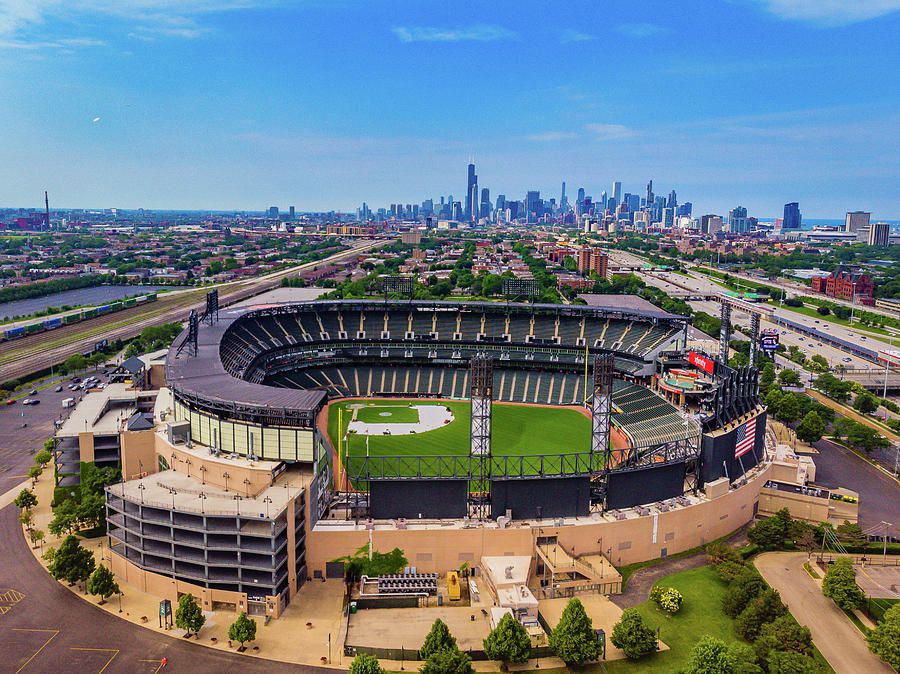
Arlington Heights is one of the new stadium possibilities the Bears have added.
The Chicago Bears’ pursuit of a new stadium is one of the most significant developments in the team’s history. For decades, the franchise has dealt with limitations in Soldier Field, their home stadium, struggling to keep up with the demands of modern sports entertainment. The purchase of the Arlington Heights site in early 2023, along with the team’s exploration of alternative stadium options, marks a potential turning point. While the Bears have explored multiple locations, Arlington Heights is now one of the leading contenders. In this comprehensive discussion, we will explore the history behind the Bears’ stadium search, the specifics of the Arlington Heights proposal, the financial implications, the challenges and community considerations, and the future of the project.
The Bears’ Search for a New Stadium: A History of Struggles
The Chicago Bears, one of the oldest and most storied franchises in the NFL, have faced a long and contentious battle when it comes to their home stadium. Soldier Field, originally opened in 1924, has undergone numerous renovations over the years, but it has never fully met the demands of a modern, multi-purpose sports venue. Soldier Field is located on the lakefront of downtown Chicago, and while it offers beautiful views of the skyline and lake, its aging infrastructure and limited capacity have become increasingly problematic.
The 2001 renovation of Soldier Field was an attempt to modernize the stadium and increase revenue opportunities for the team. However, the renovation was met with strong opposition from both fans and preservationists, who felt that the new design clashed with the historic structure. In the end, the renovation resulted in a smaller capacity, fewer premium seating options, and a less-than-ideal fan experience. The renovation was also incredibly costly, sparking a legal battle that lasted for several years.
In addition to the struggles with Soldier Field, the Bears also faced financial challenges related to the stadium. The team had limited opportunities for premium seating, sponsorships, and other revenue streams due to the stadium’s size and layout. As the NFL became a billion-dollar industry, the Bears were left behind in terms of revenue generation. The franchise began to explore the possibility of a new stadium in order to capitalize on the modern sports entertainment market.
The Arlington Heights Proposal: A New Vision for the Bears
In February 2023, the Bears made a historic move by purchasing a 326-acre plot of land in Arlington Heights, about 30 miles northwest of downtown Chicago. The site, which was formerly the location of the Arlington International Racecourse, provided the perfect opportunity for the team to create a state-of-the-art stadium that could meet all of their needs. The $197.2 million acquisition marked the beginning of a bold vision for the Bears’ future in Chicago.
The proposal for the new stadium in Arlington Heights goes beyond just building a new home for the Bears; it envisions a comprehensive development that includes not only the stadium but also a mixed-use entertainment district. The team envisions creating a destination that includes restaurants, retail spaces, hotels, and open areas, which would allow the team to generate revenue year-round, not just on game days. The new stadium would be an enclosed, dome-like structure capable of hosting major events like the Super Bowl, College Football Playoffs, concerts, and other large-scale entertainment events.
This vision of Arlington Heights as a premier sports and entertainment hub is grounded in the idea that it could provide a significant economic boost to the area. The Bears have expressed that the new development would create tens of thousands of construction jobs and generate billions of dollars in economic impact. The goal is for the stadium to be a catalyst for growth, not just for the Bears, but for the entire region.
Financial Considerations: Public Funding and Economic Impact
One of the most significant aspects of the Arlington Heights proposal is the financial aspect. While the Bears have committed to privately financing the construction of the stadium, they have also requested public funding for the infrastructure needed to support the project. This includes improvements to roads, public transportation, and other amenities in the area.
The Bears’ proposal calls for a public-private partnership that would help offset the costs of the stadium and ensure that the surrounding community benefits from the development. According to the team’s projections, the construction of the new stadium could create over 48,000 construction jobs and generate an estimated $9.4 billion in economic impact. Once the stadium is operational, the development is expected to support nearly 10,000 long-term jobs and contribute more than $1.4 billion annually to the local economy.
Additionally, the Bears’ development would have significant tax implications for the region. It is projected that the development would generate $16 million annually in property tax revenue for Arlington Heights, along with millions of dollars in tax revenue for Cook County and the state of Illinois. This would make the Arlington Heights project a major contributor to local and state government finances, making the deal more attractive to officials seeking economic growth.
However, despite the economic benefits, there has been opposition from some local residents and politicians who are wary of the public funding aspect. Critics argue that the stadium and surrounding development would contribute to increased traffic, congestion, and other potential issues. They also express concerns about the amount of taxpayer money that might be needed to support the project.
Challenges and Shifts: Revisiting Soldier Field and the Lakefront Proposal
As the Arlington Heights proposal began to take shape, the Bears encountered a series of challenges that forced them to reconsider their options. One of the primary concerns was the issue of property taxes. In 2024, negotiations between the team and the local government hit an impasse, causing the Bears to rethink their commitment to Arlington Heights. The Bears began exploring the possibility of redeveloping Soldier Field or finding another location in the Chicago area that could be a better fit for their needs.
In April 2024, the team even floated the idea of building a new stadium at Chicago’s Museum Campus, which is located near Soldier Field along the lakefront. This proposal would have allowed the Bears to remain in downtown Chicago, capitalizing on the iconic views of the lake and skyline. However, by late 2024, the focus shifted back to Arlington Heights after the Arlington Heights Board of Trustees approved a property tax agreement that helped address the Bears’ concerns.
Despite this shift, the Bears’ search for a new stadium location remains ongoing, with the team still evaluating both Arlington Heights and the lakefront proposal. The decision will ultimately depend on a variety of factors, including financial considerations, community feedback, and the potential for long-term success.
Community Engagement: Ensuring the Project Benefits All
Throughout the entire stadium process, the Bears have emphasized the importance of community engagement. From the early stages of the Arlington Heights proposal, the team has been actively seeking feedback from residents, local officials, and fans. Public meetings have been held to share the details of the stadium design and to solicit input from the community. The Bears are eager to ensure that the development aligns with the needs and interests of the local population and provides a positive impact on the surrounding area.
One of the key aspects of the Arlington Heights development is the creation of a mixed-use entertainment district that would be open year-round, offering amenities beyond football games. This vision of a vibrant, multi-purpose venue has been met with support from many local business owners, who see it as a potential boon for the area’s economy. However, some residents are concerned about the potential impact on the neighborhood, including increased traffic, noise, and the displacement of local businesses.
The Bears have pledged to work closely with local stakeholders to address these concerns and ensure that the project benefits both the team and the community. This includes discussions on infrastructure improvements, environmental sustainability, and the long-term impact on the region.
The Future of the Bears’ Stadium: What Lies Ahead?
As of early 2025, the Bears are still in the process of evaluating both Arlington Heights and the Chicago lakefront as potential locations for their new stadium. The team has not yet made a final decision, but they are actively working with local governments and community leaders to determine the best path forward. The team’s lease at Soldier Field runs through the 2033 season, providing ample time to finalize plans.
Regardless of where the stadium ultimately ends up, it is clear that the Bears are committed to creating a state-of-the-art facility that will elevate the fan experience and generate significant economic impact. The new stadium, whether in Arlington Heights or on the lakefront, will likely be a major step forward for the team and for the city of Chicago.
In conclusion, the Chicago Bears’ exploration of a new stadium in Arlington Heights is a crucial development in the franchise’s history. The team’s vision for a state-of-the-art stadium and entertainment district could transform the region and provide significant economic benefits. However, the project also faces challenges, including the need for public funding and concerns about its impact on the local community. As the Bears continue to evaluate their options, they remain focused on delivering a world-class venue that will serve the team, the fans, and the greater Chicagoland area for years to come. The decision on the stadium’s location is still pending, but the journey to a new home for the Bears is well underway.





